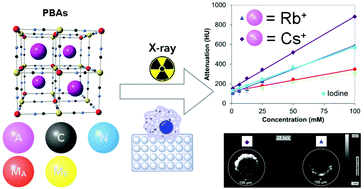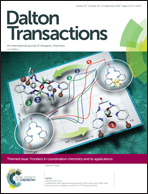Abstract
Prussian blue analogs (PBAs) are versatile materials with a wide range of applications. Due to their tunability, intrinsic biocompatibility, as well as low toxicity, these nanoscale coordination polymers have been successfully studied as multimodal contrast agents for multiple imaging techniques. Herein, we report the expanded biomedical application of PBAs to X-ray computed tomography (CT). In our systematic study of the series A{MnII[FeIII(CN)6]} (A = K+, Rb+, Cs+), we showed that derivatives incorporating Rb+ and Cs+ ions in the tetrahedral sites of the parent face-centered cubic cyano-bridged networks exhibited substantially increased X-ray attenuation coefficients, thus yielding significant contrast compared to the clinically approved X-ray contrast agent iohexol at the same concentrations. Additionally, our μ-CT studies revealed that these PBAs could be useful as dual-energy CT contrast agents for different biological specimens by using the lower varying scanning X-ray tube voltages. Finally, in vitro studies using U87-Luc cells treated with PBAs, including cellular CT imaging and bioluminescence cell viability assays, revealed that PBAs were taken up by the glioblastoma cells, with moderate biocompatibility at concentrations below the mM range.

- This article is part of the themed collection: Frontiers in coordination chemistry and its applications


 Please wait while we load your content...
Please wait while we load your content...